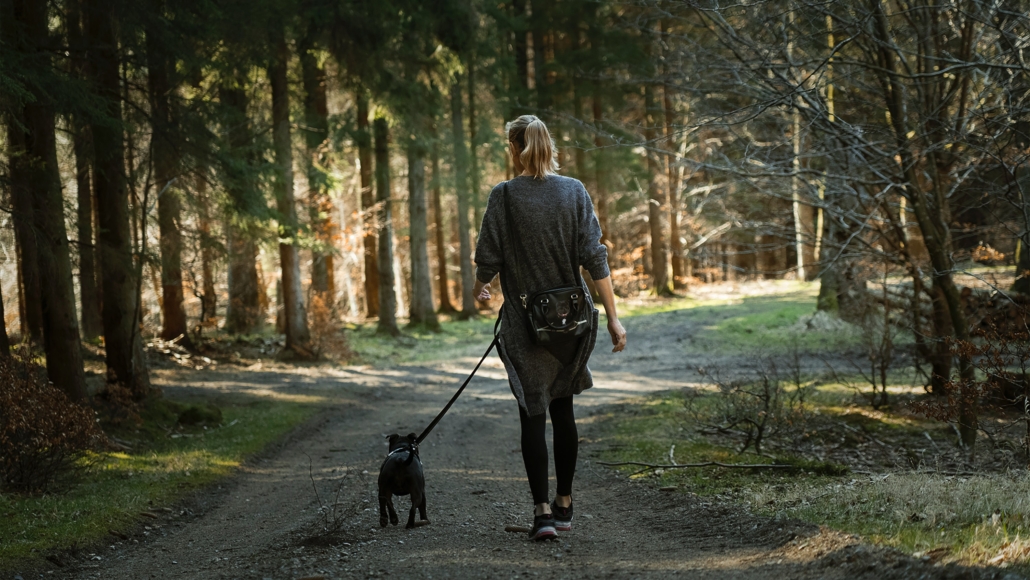What Do Most People Use CBD for?

Photo by Martin Dalsgaard on Unsplash
Are you curious about the uses for CBD distillate? If so, you’re not alone. In fact, at least 33% of Americans have reportedly tried CBD at least once. As of 2022, 26% of American adults are currently using CBD, and 64% of Americans are familiar with the ingredient.
To state it another way, according to Consumer Reports in 2019, 64 million Americans had used CBD sometime in the previous 24 months. And that number continues to grow. In the same report, Consumer Reports found 22% said CBD helped them lower the amount of prescription or over-the-counter drugs used. 1
In comparison, in 2018, only 6% of Americans had used CBD. Now, more than a quarter of the U.S. population uses CBD, and 1 in 7 adults report using it daily. And within the next couple of years, CBD usage is expected to hit 35% of Americans.
What Is CBD Distillate?
CBD distillate is made by extracting the CBD or cannabidiol oil from the cannabis plant. Many people raise their eyebrows when hearing the word “cannabis,” immediately thinking of marijuana or its psychoactive ingredient, THC (tetrahydrocannabinol). While the two may be related, they are definitely not the same. And the two compounds have very different effects on the body.
Unlike THC, CBD comes from the industrial hemp plant and does not produce any psychoactive effects. This is because industrial hemp is nearly free of the psychoactive THC, containing less than 0.3% by law. That doesn’t mean CBD isn’t effective. One of over 100 cannabinoid chemicals found in cannabis, CBD is one of the most intriguing. In fact, this natural plant compound is sought after by millions to support them through various conditions.
What CBD Isn’t
There are a lot of misconceptions about CBD and what it is. For instance, 26% of Americans think CBD and marijuana are the same thing (they aren’t). Another 57% are afraid CBD will result in a positive drug test. This will not happen with any pure CBD distillates, which have 0% THC.
Another 47% think that CBS is federally regulated as a drug. However, CBD is seen more like a supplement. So, while there is government oversight, the regulation differs from medications.
Uses for CBD Distillate
The most common reason Americans use CBD is to help ease pain, with 64% reporting this as their primary reason. In second place comes anxiety and stress (49%), followed by 42% stating sleep and insomnia as their main reasons for using CBD distillate.
Other common reasons include:
- Arthritis: 27%
- Depression: 26%
- Headaches (including migraines): 21%
- Other mental health issues: 8%
- Digestive health: 8%
- Skincare: 6%
- General health: 5%
Of course, we also know CBD may be helpful for pets as well, and 8% also list pet care as a primary reason.
Women tend to use CBD for health reasons, including improved relaxation, stress and anxiety relief, and pain relief for muscles, joints, and headaches compared to men. Men are more likely to use CBD more socially and for spiritual use as well as to improve sleep.
In most cases, CBD users have found CBD to be effective for what they’re using it for. Nearly 62% of CBD users, for instance, say CBD helped with conditions like pain, anxiety, depression, or sleep issues. And, 36% of those people used CBD alone. On the other end, only 4.3% reported that CBD didn’t work very well for their condition. 2
Not everyone has jumped on the CBD bandwagon as of yet. For instance, 30% report they just haven’t found a product that appeals to them, another 25% aren’t familiar enough with CBD and its benefits, 16% have found CBD products don’t fit into their budgets, and 13% are concerned about side effects.
Younger folks—ages 18 to 29 years old—tend to be the most familiar with CBD and its benefits. Forty percent of this age group has tried CBD. In comparison, only 8% of people over 65 use CBD, though nearly half (49%) know what it is.
Results, of course, also vary from person to person. There are just so many variables when it comes to CBD distillates, such as:
- Products
- Hemp strains
- How the product is used (e.g., tinctures, tablets, sprays, lotions and balms, bath bombs, foods, coffee, gummies, etc.)
- Dosage
- Weight
- Condition
- And more.

Photo by Юлія Вівчарик on Unsplash
State of CBD Appeal
While CBD is available throughout the U.S., not all states use equal amounts of it. The states that use the most are California, Florida, and New York. In addition, people in western states are more likely to use CBD at 21%, while eastern and midwestern states are less likely with only 11% usage.
Yet even in states that use less, interest and popularity are growing due to the potential benefits of CBD.
What Is CBD Distillate Good for?
There are many uses and claimed benefits of CBD distillate. But it isn’t a one-size-fits-all miracle compound. To find out how effective CBD may be, we need rigorous double-blind, controlled studies. Fortunately, more and more research is coming in, and CBD has been found in studies to potentially help decrease:
- Chronic neuropathic pain 3
- Anxiety 4, 5
- Pain and inflammation (in both animal and human studies and with and without THC) 6 – 14
- Insomnia and symptoms of PTSD like nightmares 15 – 17
- Nausea and vomiting 18
- And even seizures in some cases 19, 20
Other research found CBD may help promote:
- A calm mental state 5
- Quality sleep 5
- Heart health by helping reduce resting blood pressure 21, 22
Uses for CBD Distillate Takeaway
CBD usage and popularity have skyrocketed over the last several years, and its use is only continuing to grow. CBD distillate can be found not only as tinctures but in a variety of products from bath bombs and gummies to dog drops, salves, and treats. Fortunately, the science is ongoing to help us understand how and why CBD distillate can benefit human and pet health.
Ready to explore more CBD distillate uses for pets and how the best CBD for pets—ABSC Organics—can help your pet live a more vibrant, healthy life? Get started here.
Related Information:
- CBD Oil for Small Dogs
- CBD Oil for Medium Pets
- CBD Oil for Large Dogs
- CBD Oil for Dogs
- CBD FAQs for Pets
- Pure CBD Oil Dosage for Dogs
References:
- Gill LL. CBD goes mainstream [Internet]. Consumer Reports. 2019 [cited 2022Dec1]. Available from: https://www.consumerreports.org/cbd/cbd-goes-mainstream/
- Corroon J, Phillips JA. A cross-sectional study of cannabidiol users. Cannabis and Cannabinoid Research. 2018 Jul 1;3(1):152-61. https://www.ncbi.nlm.nih.gov/pmc/articles/PMC6043845/
- Hoggart B, Ratcliffe S, Ehler E, Simpson KH, Hovorka J, Lejčko J, Taylor L, Lauder H, Serpell M. A multicentre, open-label, follow-on study to assess the long-term maintenance of effect, tolerance and safety of THC/CBD oromucosal spray in the management of neuropathic pain. Journal of Neurology. 2015 Jan;262(1):27-40. https://link.springer.com/article/10.1007/s00415-014-7502-9
- Blessing EM, Steenkamp MM, Manzanares J, Marmar CR. Cannabidiol as a potential treatment for anxiety disorders. Neurotherapeutics. 2015 Oct;12(4):825-36. https://www.ncbi.nlm.nih.gov/pmc/articles/PMC4604171/
- Shannon S, Lewis N, Lee H, Hughes S. Cannabidiol in anxiety and sleep: a large case series. The Permanente Journal. 2019;23. https://www.ncbi.nlm.nih.gov/pmc/articles/PMC6326553/
- Hammell DC, Zhang LP, Ma F, Abshire SM, McIlwrath SL, Stinchcomb AL, Westlund KN. Transdermal cannabidiol reduces inflammation and pain‐related behaviours in a rat model of arthritis. European Journal of Pain. 2016 Jul;20(6):936-48. https://www.ncbi.nlm.nih.gov/pmc/articles/PMC4851925/
- Darkovska-Serafimovska M, Serafimovska T, Arsova-Sarafinovska Z, Stefanoski S, Keskovski Z, Balkanov T. Pharmacotherapeutic considerations for use of cannabinoids to relieve pain in patients with malignant diseases. Journal of Pain Research. 2018;11:837. https://www.ncbi.nlm.nih.gov/pmc/articles/PMC5922297/
- Eskander JP, Spall J, Spall A, Shah RV, Kaye AD. Cannabidiol (CBD) as a treatment of acute and chronic back pain: A case series and literature review. J Opioid Manag. 2020 May 1;16(3):215-8. https://pubmed.ncbi.nlm.nih.gov/32421842/
- Schilling JM, Hughes CG, Wallace MS, Sexton M, Backonja M, Moeller-Bertram T. Cannabidiol as a treatment for chronic pain: a survey of patients’ perspectives and attitudes. Journal of Pain Research. 2021;14:1241. https://pubmed.ncbi.nlm.nih.gov/33981161/
- Russo M, Calabrò RS, Naro A, Sessa E, Rifici C, D’Aleo G, Leo A, De Luca R, Quartarone A, Bramanti P. Sativex in the management of multiple sclerosis-related spasticity: role of the corticospinal modulation. Neural Plasticity. 2015 Jan 29;2015. https://pubmed.ncbi.nlm.nih.gov/25699191/
- Überall MA. A review of scientific evidence for THC: CBD oromucosal spray (nabiximols) in the management of chronic pain. Journal of Pain Research. 2020;13:399. https://www.ncbi.nlm.nih.gov/pmc/articles/PMC7027889/
- Boehnke KF, Gagnier JJ, Matallana L, Williams DA. Cannabidiol use for fibromyalgia: prevalence of use and perceptions of effectiveness in a large online survey. The Journal of Pain. 2021 May 1;22(5):556-66. https://pubmed.ncbi.nlm.nih.gov/33400996/
- Fitzcharles MA, Clauw DJ, Hauser W. A cautious hope for cannabidiol (CBD) in rheumatology care. Arthritis Care & Research. 2020 Mar 7. https://pubmed.ncbi.nlm.nih.gov/32144889/
- Linares IM, Zuardi AW, Pereira LC, Queiroz RH, Mechoulam R, Guimarães FS, Crippa JA. Cannabidiol presents an inverted U-shaped dose-response curve in a simulated public speaking test. Brazilian Journal of Psychiatry. 2018 Oct 11;41:9-14. https://pubmed.ncbi.nlm.nih.gov/30328956/
- Shannon S, Opila-Lehman J. Effectiveness of cannabidiol oil for pediatric anxiety and insomnia as part of posttraumatic stress disorder: a case report. The Permanente Journal. 2016;20(4). https://www.ncbi.nlm.nih.gov/pmc/articles/PMC5101100/
- Elms L, Shannon S, Hughes S, Lewis N. Cannabidiol in the treatment of post-traumatic stress disorder: a case series. The Journal of Alternative and Complementary Medicine. 2019 Apr 1;25(4):392-7. https://pubmed.ncbi.nlm.nih.gov/30543451/
- García-Gutiérrez MS, Navarrete F, Gasparyan A, Austrich-Olivares A, Sala F, Manzanares J. Cannabidiol: a potential new alternative for the treatment of anxiety, depression, and psychotic disorders. Biomolecules. 2020 Nov 19;10(11):1575. https://www.ncbi.nlm.nih.gov/pmc/articles/PMC7699613/
- Johnson JR, Burnell-Nugent M, Lossignol D, Ganae-Motan ED, Potts R, Fallon MT. Multicenter, double-blind, randomized, placebo-controlled, parallel-group study of the efficacy, safety, and tolerability of THC: CBD extract and THC extract in patients with intractable cancer-related pain. Journal of Pain and Symptom Management. 2010 Feb 1;39(2):167-79. https://pubmed.ncbi.nlm.nih.gov/19896326/
- Devinsky O, Marsh E, Friedman D, Thiele E, Laux L, Sullivan J, Miller I, Flamini R, Wilfong A, Filloux F, Wong M. Cannabidiol in patients with treatment-resistant epilepsy: an open-label interventional trial. The Lancet Neurology. 2016 Mar 1;15(3):270-8. https://pubmed.ncbi.nlm.nih.gov/26724101/
- US Food and Drug Administration. FDA approves new indication for drug containing an active ingredient derived from cannabis to treat seizures in rare genetic disease. URL https://www.FDA.gov/news-events/press-announcements/fda-approves-new-indication-drugcontaining-active-ingredient-derived-cannabis-treat-seizures-rare (accessed 3.15. 21). 2020 Mar 5.
- Jadoon KA, Tan GD, O’Sullivan SE. A single dose of cannabidiol reduces blood pressure in healthy volunteers in a randomized crossover study. JCI Insight. 2017 Jun 6;2(12). https://www.ncbi.nlm.nih.gov/pmc/articles/PMC5470879/
- Sultan SR, O’Sullivan SE, England TJ. The effects of acute and sustained cannabidiol dosing for seven days on the haemodynamics in healthy men: A randomised controlled trial. British Journal of Clinical Pharmacology. 2020 Jun;86(6):1125-38. https://www.ncbi.nlm.nih.gov/pmc/articles/PMC7256118/

